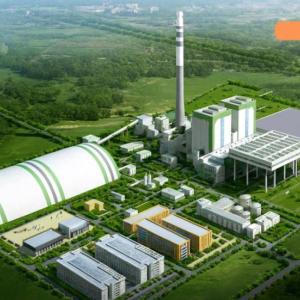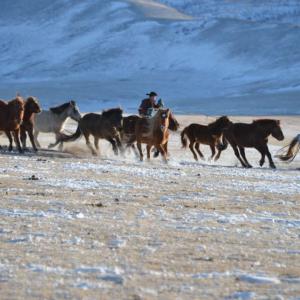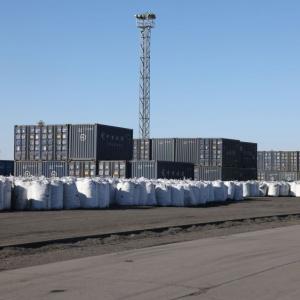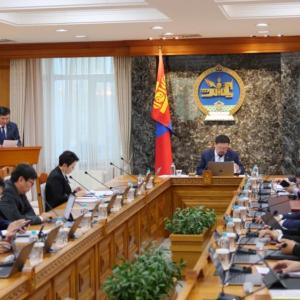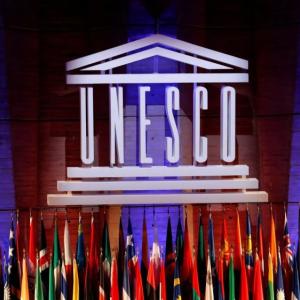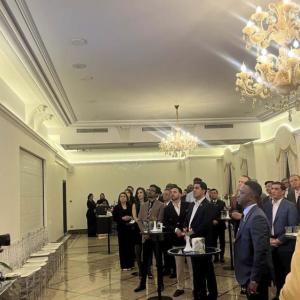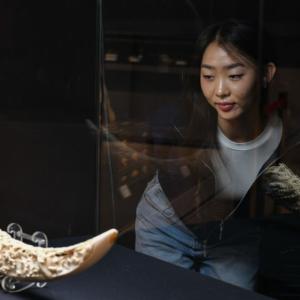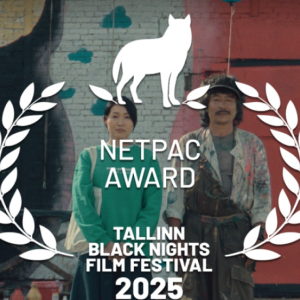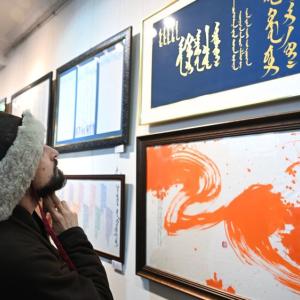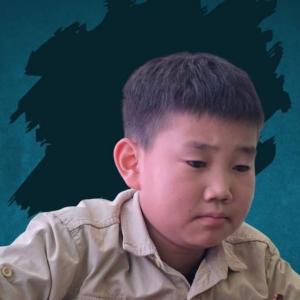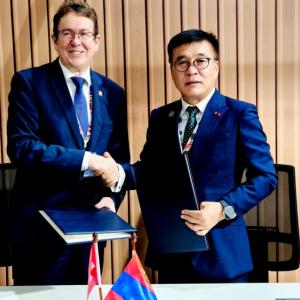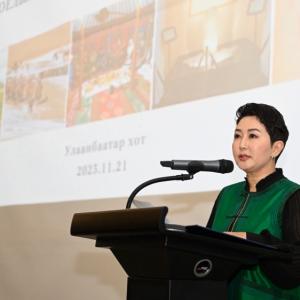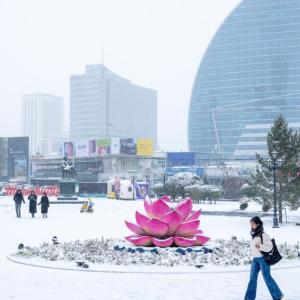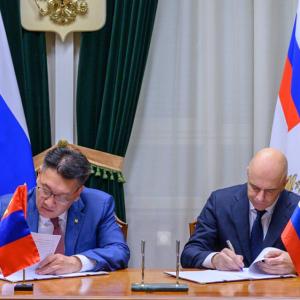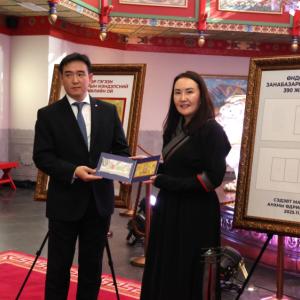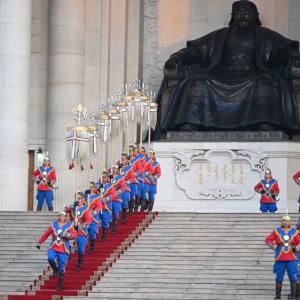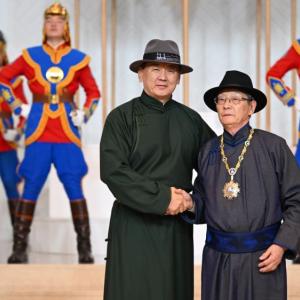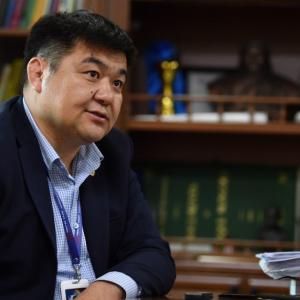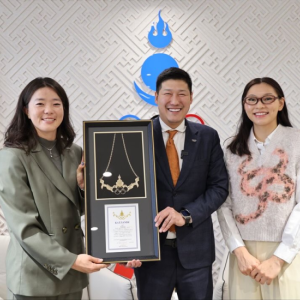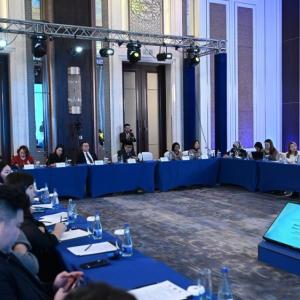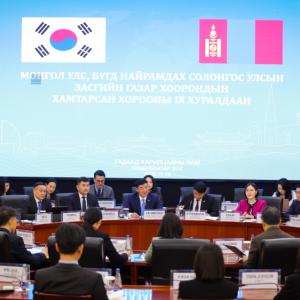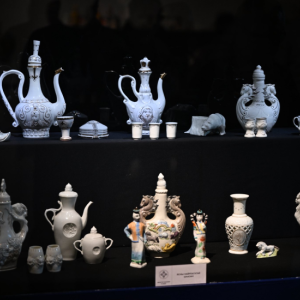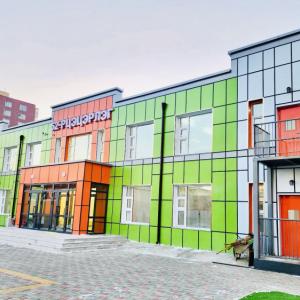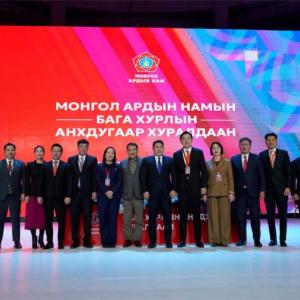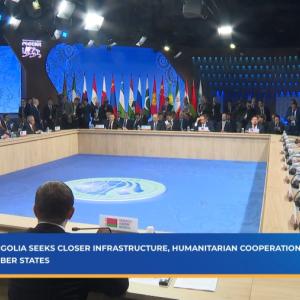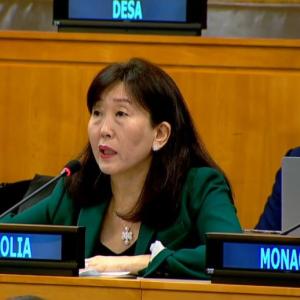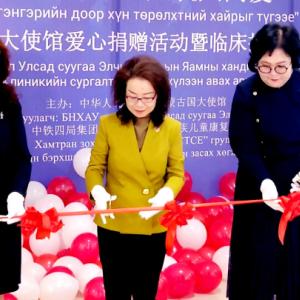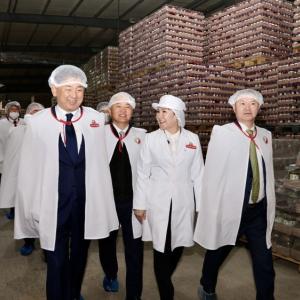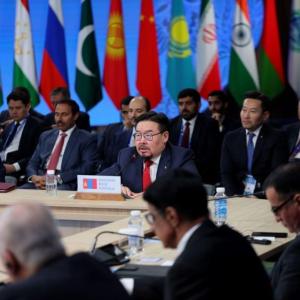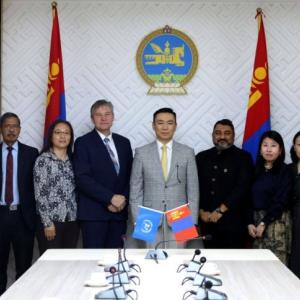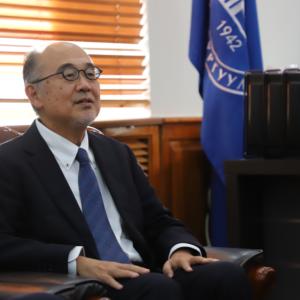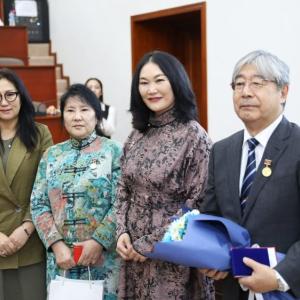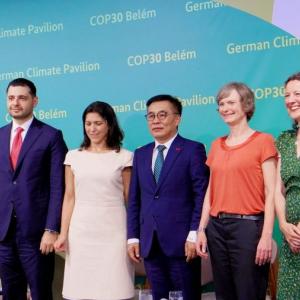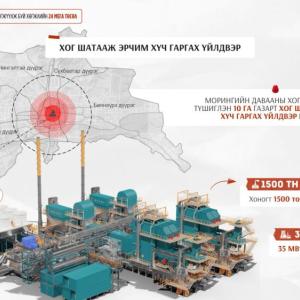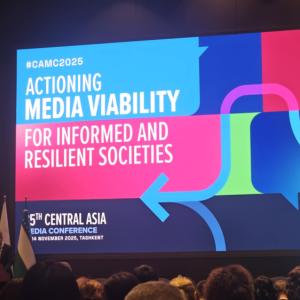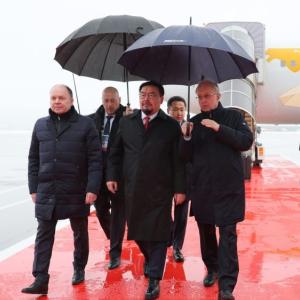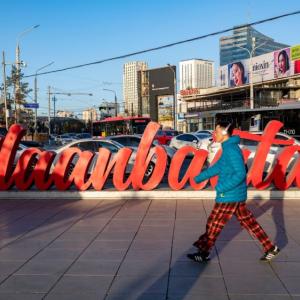Prof. N. Norov: Only a radiation amount several thousand times higher than norm is deemed dangerous
Society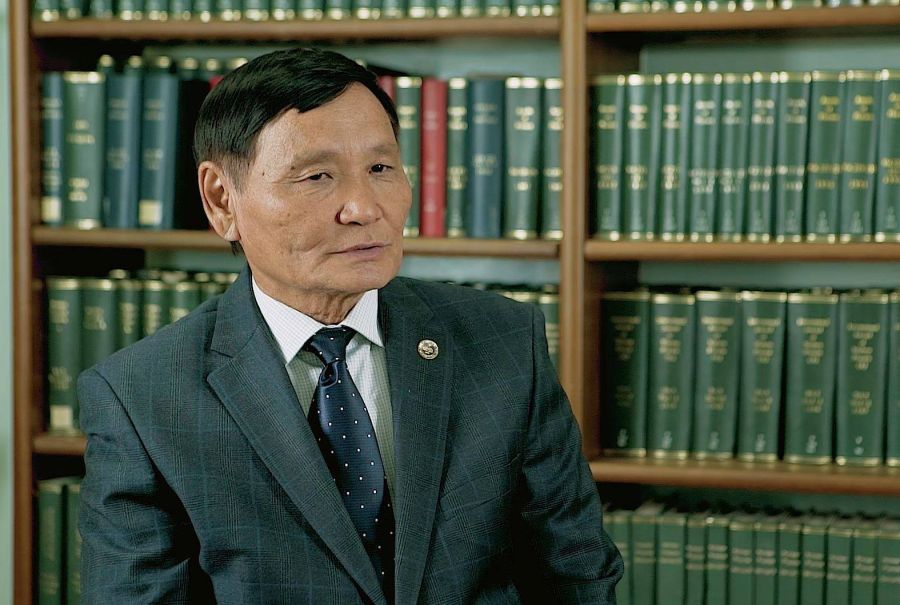
Reporter G. Oyunsuren
On October 5, the working group that was established by the Government Administration reported its conclusion that “there was no worsening condition for the environment, health of people and livestock due to uranium” after researching and analyzing the area around the uranium plant of Badrakh Energy in Ulaanbadrakh soum of Dornogovi province.
That is why we wanted to bring the actual information to the public and listened to the opinion of an independent professional person. Manager and professor of the Nuclear Physics Research Center at the Mongolian National University N. Norov, who is the first specialist of Mongolia on atomic power stations and also a teacher who brought forth six Mongolian doctors on reactors. This is the interview with him.
- The professional team worked on the territory of Ulaanbadrakh soum, where the uranium exploration was taking place, and recently presented its conclusion. It then reported to the public that there was no worsening or harmful condition for the environment, health of people and livestock due to uranium. Do you, as a professional, agree with this conclusion?
I was not in that working group. I was in the large working group that was established by the resolution 47 of N. Altanhuyag’s Government and that included every research and study institution, when twenty calves of Zuunbayan bag herder D. Norsuren had died in late 2012, while grazing in Ulaanbadrakh soum. The results of the study showed that calves died of a chronic selenium poisoning.
We took for analysis the samples not only from the soil and water in the area, but also from the innards of dead calves. One copy of the study was sent to the Republic of Korea. Because that analysis also showed the chronic selenium poisoning, the working group concluded that it had been a selenium poisoning.
- What does it mean? It was not because of uranium?
That area in Dornogovi underwent a considerable geological change. The uranium orebody is at the depth of 200 m from the land surface, while below it there is the Zuunbayan Tsagaan Els uranium deposit 800-1 000 m deep. In other words, there are two types of minerals, which went through a very deep geological change. Since Gobi has little water and no permanent flows, the water has a lot of salinity and is enriched with various chemical elements after being transformed for many years.
I was not in the recent working group. So I do not know well about the last conclusion. The previous working group stated that selenium was higher than it should be in most of the drinking water wells. The impact from the uranium radiation is very low there. The upper drinking water aquifer is relatively alright.
For example, it has been observed that amounts of uranium and other elements are high in the aquifer with the uranium orebody. So the water has formed naturally to contain enriched and mineralized amounts including other elements in addition to uranium.
- Is there a probability that the impact of the radioactive substance uranium may increase after the beginning of the exploration and study by Badrakh Energy?
Ulaanbadrakh has a relatively little amount of uranium, when compared to other places such as Ulaanbaatar. That is because uranium, which is in granite on the surface, is washed by water, turns into an ore below and becomes enriched. So it is relatively less on the surface. Of course, there are occasional places where the uranium orebody is close to the land surface. These places are called high radiation areas by some movements. But that is just a rock with uranium appearing relatively open. It is a rock that has a bit more uranium. But no person and no animal will eat this rock. Before the French company came to explore, the Russians conducted the exploration and formed the open uranium orebody spots after digging holes. It is hard to call them dangerous.
- However, certain movements still assume that Badrakh Energy company has intoxicated the human and livestock?
Badrakh Energy is a company with investments of France and Mongolia. It is talked as if the French come and dig all our uranium. But this is a joint investment company built on an agreement of three countries.
Their technology is the most modern. This method is being used to mine half of uranium produced in the world. This method has developed greatly in recent years. Uranium will be mined through this economically profitable and environmentally relatively clean technology. But it is not being mined right now.
- So can I understand that there will be no nuclear waste due to the use of this technology?
Yes, there will be no nuclear waste at all. This is not like digging the earth and draining the groundwater to mine coal. There will be no land digging or water draining. They will retrieve the water of the uranium ore aquifer by circulating it, turn it into a weak sulfuric acid solution, inject back into the orebody, select and leach uranium and adsorb the retrieved uranium in resin. The water will be used in a circulating mode. So it is a relatively clean technology that does not expend water. It is especially suitable for the uranium deposit in Ulaanbadrakh soum. Our uranium deposit has uranium brought by the groundwater, having eventually turned it into an ore. It has clay layers above and below. That is why uranium will not permeate further.
- There was a lot of scandal, when they showed a six-legged newborn goat to the public. So this deformation is considered to have formed due to a unique natural phenomenon?
Only an enormous radiation amount can cause congenital deformations. Otherwise, the natural level radiation, which existed for many million years in Mongolia, cannot cause a genetic change.
Genes or the thing called inbreeding impacts the fetus development. I myself am a Dundgovi man. In our Gobi, the livestock is inbreeding. Because it is a desert area, there is a deficiency of improving the livestock. So inbreeding of the livestock should be avoided.
- You said that the enormous radiation level could cause a congenital deformation. Can you provide the numbers?
Living organisms across the world are living under the radiation impact. There are three main sources of the radiation impact:
1. Space radiation: The radiation coming from the hot nuclear reaction in the Sun increases the more you get close to the Sun. For example, Dornogovi province is located 760-770 m above the sea level, twice lower than the city of Ulaanbaatar. So it means that people of Ulaanbaatar are more exposed to the impact of space rays.
2. Amount of the radioactive substance radon in the air: This substance enters through breath and causes an internal exposure in people.
3. Soil and things: Nothing is without radioactive substances. The impact from the soil and construction materials is important here.
Our country is similar to the world average. When there is something higher than the average, the radiation in the soil will show higher. For example, if we use the radioactive sand and gravel as construction materials, the building walls will emit a lot of radiation. For example, it was determined that the ash from the thermal power stations no. 3 and 4 should not be used as a construction material. If it is used, then the radiation will rise above the norm.
In other words, we are always impacted by the radiation. It is there to a certain extent. We would talk about the radiation danger, if doses will be many thousand and million times above that level. Our uranium ore did not reach that level. For example, the dose of natural radiation is 0.15μSv/hour. It is same in Ulaanbadrakh soum too. The previously said active spots formed by the Russians in Ulaanbadrakh soum demonstrate approximately 1.0μSv/hour. There should be a talk about the accident if only it increases not 5-6 times, but several thousand and million times above that level.
- If it is safe as you say, how is it useful for our country, if the plant that has been built starts to operate?
Our country has two types of energy resource – coal and uranium. Burning coal causes the air pollution and it in turn becomes a national issue. But there is the same enriched uranium in the coal. All coal deposits of our country are adjacent to uranium deposits.
The uranium mine called Mardai in Dornod is close to the Aduunchuluun coal mine. There is a uranium deposit near the Janchivlin spring in Erdene soum, close to the Baganuur coal mine. Beyond the Shivee Ovoo coal mine is the Haraat uranium deposit. Because they are close to each other, uranium enriches in coal. The smoke coming from our power stations contains the very uranium that you fear. To be exact, uranium and other radioactive elements directly wasted into the air in Ulaanbaatar and entering into bodies with breath is more impactful than uranium lying 200 m deep in Gobi.
The countries are now distancing from the 200-year old technology of burning coal. We are still burning it. In order to dig and retrieve one ton of coal in Baganuur, we pile four tons of soil and drain the groundwater. It means that we are operating needlessly four times. The 4th thermal power station burns 70 containers of coal per day. 15 percent of the delivered coal becomes ash. 45 percent of it is moisture or water. So 55 percent or half of it is not profitable. But one gram of uranium is equal to more than twenty tons of coal. It is a much more effective technology.
On the other hand, our country is said to have ample reserves of coal, but they are only about one percent of the total world reserve. But in terms of uranium we have about two percent of the total world reserve.
The southern neighbor is shifting from burning coal to the hydrogen technology. Uranium is important for hydrogen. Because our country does not have the natural gas, we would end up making it from our water. In order split the water, we would need electricity, thus making it expensive. Our coal is a combination of carbon and hydrogen. It means that hydrogen needs to be separated. We will gradually use uranium, process coal and move to the hydrogen energy. That is the way for the development.
- Thank you for the important information.
Thank you.
 Ulaanbaatar
Ulaanbaatar






